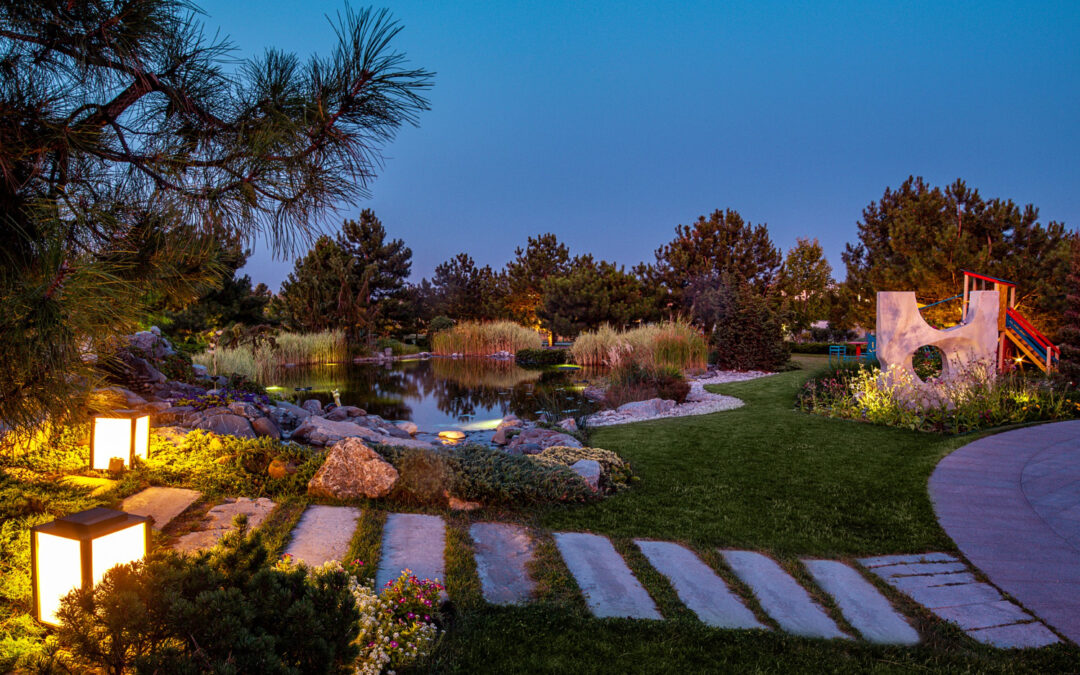A beautiful garden doesn’t just look great in the daylight; it can shine at night too with the right landscape lighting. Choosing the best lighting for your plants is key to highlighting their beauty while helping them grow strong and healthy. Matching your plants with the correct lighting type not only enhances your garden’s charm but also keeps plants happy.
Understanding Plant Lighting Needs
Every plant in your garden has its own lighting needs that depend on its species and growth stage. Some plants thrive in full sun, while others prefer the shade. Knowing these differences helps you choose the right lighting and supports healthy growth. For example, sun-loving plants like roses enjoy direct light, while ferns do better in lower light conditions.
As plants grow, their lighting needs can change. Young seedlings might need less intense light compared to mature plants. Recognizing how lighting affects growth stages allows you to adjust lighting to cater to your plants’ evolving needs. Over time, you might need to alter the intensity or direction of lights to accommodate these changes.
Successfully mimicking natural light conditions in your garden ensures that your plants feel at home. This means considering the natural sunlight different plants receive during the day and reflecting that with your landscape lights at night. When you copy natural lighting, plants can grow strong and healthy, keeping your garden lush and thriving. Understanding the lighting needs of your plants ultimately helps create a vibrant garden that looks fantastic day and night.
Choosing the Right Light Types for Your Plants
Choosing suitable lighting types for your plants plays a vital role in their health and beauty. Various landscape lighting options are available, each designed to suit different plants and environments. LED lights are energy-efficient and provide a range of brightness, making them great for most garden needs. Halogen lights offer a warm glow but consume more power, while solar lights are eco-friendly and easy to install.
Matching the right light to your plant species keeps them glowing perfectly. Tall trees can benefit from uplighting to highlight their branches, while smaller plants like shrubs look lovely with softer, ambient light. Flower beds might require a mix of spotlights and path lights to create depth and interest.
Comparing light types helps you decide which works best for your garden:
- LED Lights: Cost-effective, durable, and come in different colors.
- Halogen Lights: Provide warm light, suitable for creating cozy spaces.
- Solar Lights: Environmentally friendly, rely on sunlight so ideal for sunny areas.
Selecting the right lighting ensures your landscape is both beautiful and functional, enhancing the natural beauty of your plants while meeting their unique lighting needs.
Strategic Placement for Optimal Growth
Strategically placing your landscape lights is crucial for the health and appearance of your plants. Proper placement helps ensure that lights don’t overpower the plants but instead highlight their natural beauty. When positioning lights, aim them to gently illuminate the foliage and cast interesting shadows, creating depth and a sense of mystery in your garden.
Avoid these common mistakes to make the most out of your lighting: placing lights too close to plants can cause overheating, while burying fixtures deep in dense foliage might block the light, reducing its effectiveness. Make sure that the lights cover the entire plant without harsh glares or dark spots to promote even growth.
Balancing aesthetics with functionality is key in lighting placement. Think about the visual appeal as well as how the light will impact plant growth. Choose angles that showcase your plant’s best features while ensuring that light reaches the leaves and soil adequately. When done right, good placement can enhance both the health of your plants and the beauty of your garden during the nighttime.
Maintaining Landscape Lighting Systems
Keeping your landscape lighting system in top shape ensures it functions efficiently and lasts longer. Regular maintenance tasks include checking for burned-out bulbs, cleaning fixtures to maintain brightness, and ensuring connections remain secure and weatherproof. This helps keep the lights shining brightly and safely.
Troubleshooting common lighting issues quickly can save time and prevent bigger problems. Check for flickering lights, which might be due to loose connections or faulty transformers. Act promptly to address any wiring issues to avoid extensive damage.
Seasonal adjustments help optimize your lighting for different weather conditions. During the growing season, adjust lights to accommodate taller plants or new growth. In colder months, secure fixtures against harsh weather or snowfall. These adjustments make sure your lighting system remains effective and keeps your garden looking wonderful all year round.
Conclusion
Selecting and maintaining the right landscape lighting for your garden enhances its beauty and supports the health of your plants. By understanding each plant’s light needs and choosing the appropriate lighting type, you create a harmonious environment where your plants can thrive both day and night. Proper placement and regular maintenance ensure that your lights not only illuminate your garden effectively but also contribute to its overall vitality and charm.
Transform your garden with expert lighting solutions from EdenScapes. Our team is ready to help you with custom landscape design that meets your unique needs and styles. Reach out to us today, and let us brighten your garden with creativity and care!

